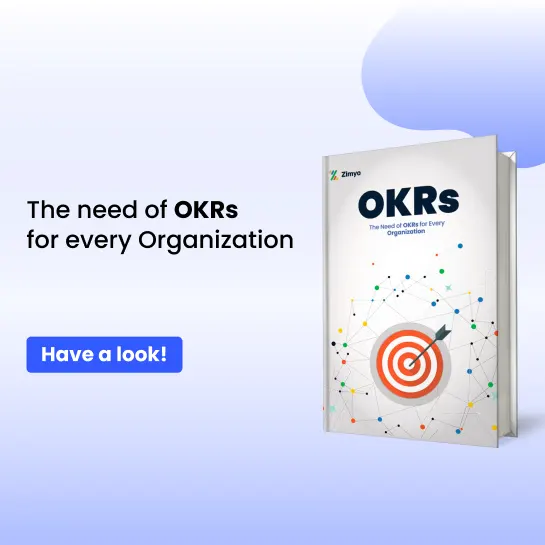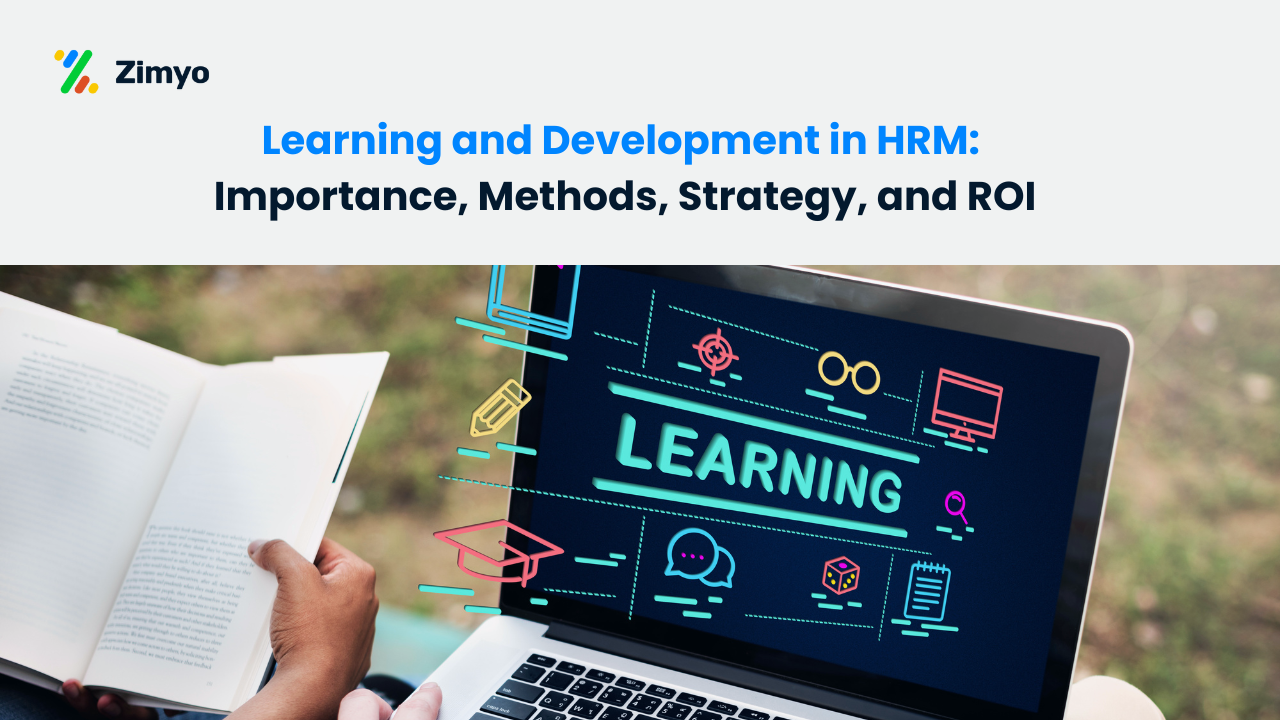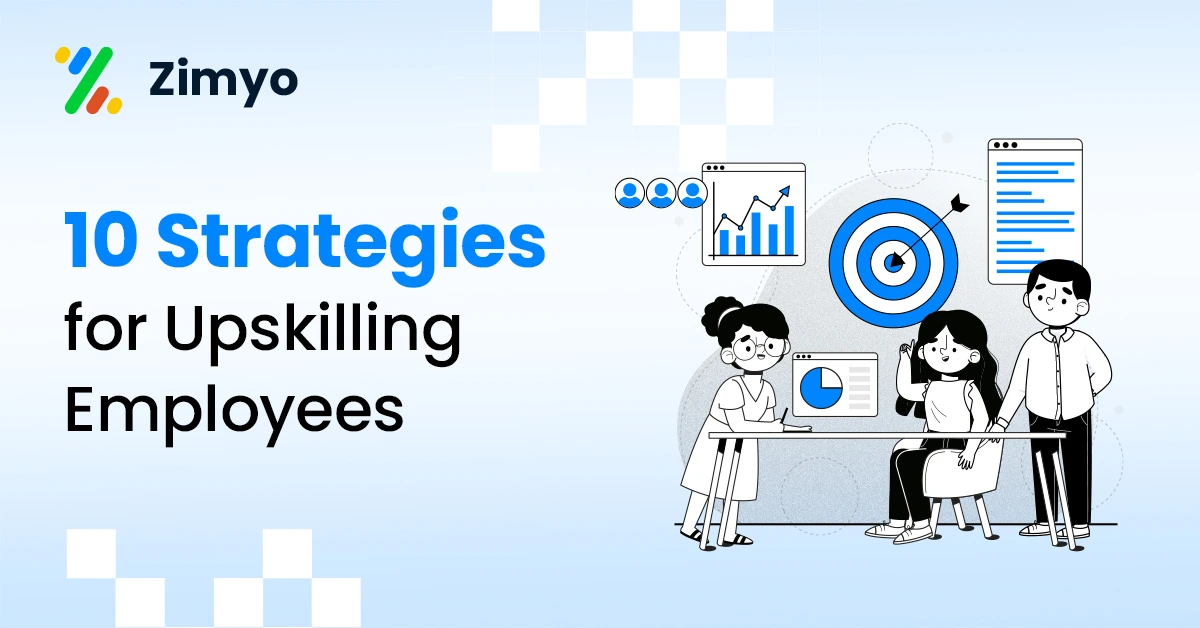Introduction
The job market will change rapidly in 2025. Technology is evolving, and businesses must keep up to stay competitive. Employees who learn and upgrade their skills have better career development prospects. Companies that invest in Human Resources Training and Development stay ahead in the game.
In this blog, we will understand why training and development is important in HRM. We’ll also discuss how a Learning Management System (LMS) helps businesses and employees grow.
Importance of Training and Development
1. Technology is Evolving Fast
- Artificial intelligence, automation, and data analytics are reshaping industries.
- Employees must adapt to new tools and technologies.
- Businesses that fail to upskill their workforce risk falling behind.
2. Job Roles are Changing
- Many traditional job roles are becoming obsolete.
- New job positions demand new skills.
- Continuous learning ensures employees stay relevant in their fields.
3. Improves Employee Performance
- Employees perform better when they are well trained.
- Learning new skills increases employee productivity and efficiency.
- Trained employees can handle complex tasks with ease.
4. Gives Career Growth a Boost
- Skills development opens doors to better job opportunities.
- Upskilled employees are more likely to get promotions.
- Professionals with updated skills have better job security.
5. Enhances Job Satisfaction
- Employees feel valued when companies invest in their growth.
- Learning new things keeps work interesting and engaging.
- Reduced stress levels due to increased confidence in job roles.
How Companies Can Promote Workforce Development?

1. Implementing Employee Job Training Programs
- Provide regular workshops and online courses.
- Offer mentorship programs to guide employees.
- Encourage team members to learn through group projects.
2. Using a Learning Management System (LMS)
- A Learning Management System (LMS) helps track employees’ learning progress.
- Companies can offer customized training content based on employee needs.
- Employees can learn at their own pace, making training flexible.
3. Encouraging Skills Training in HR
- HR teams must identify skill gaps in employees.
- Personalized training plans should be created for workforce development.
- Soft skills training should also be prioritized alongside technical skills.
4. Providing Financial Support for Learning
- Companies can offer tuition reimbursement programs.
- Sponsorship for professional development certifications boosts employee engagement.
- Access to paid online courses encourages self-learning and positively impacts the whole Human Resources Training and Development Program.
5. Creating a Learning Culture with Human Resources Training and Development
- Encourage employees to share knowledge with peers.
- Recognize and reward employees who complete training workforce development programs.
- Leaders should set an example by engaging in continuous learning.
I was able to implement the platform on my own. It helps in assigning the tasks to other employees, conducting surveys and polls, and much more. The ease of use and self-onboarding is something that I would like to appreciate.
Sonali, Kommunicate
Zimyo simplifies attendance management for our organization. The leave and attendance are so streamlined that we have never faced any difficulties with the system.
Anurag, Eggoz Nutrition
Future Trends in Human Resources Training and Development

1. AI-Powered Learning
- AI-based human resource management tools personalize training programs.
- Employees receive recommendations based on their skills and roles.
2. Microlearning
- Short, bite-sized learning modules improve employee retention.
- Employees can learn in small sessions without disrupting work.
3. Gamification
- Adding rewards and challenges makes learning fun.
- Employees stay motivated to complete training sessions.
4. Virtual Reality (VR) and Augmented Reality (AR) Training
- Real-life simulations enhance practical learning.
- Industries like healthcare and engineering benefit the most.
5. Mobile Learning
- Employees can access training from anywhere.
- Learning on mobile devices increases flexibility.
Conclusion
Human Resources Training and Development will no longer be optional in 2025. Businesses must invest in employee training programs to stay competitive. Workforce development ensures employees remain skilled and productive.
A Learning Management System (LMS) makes training easy and effective. Skills training in HR helps identify gaps and provide targeted learning.
By focusing on Human Resources Training and Development, both employees and businesses will thrive in the future of work.
Key Takeaways
- Technology is evolving, and employees must upskill to stay relevant.
- Companies benefit from well-trained and efficient employees.
- Employee training programs, workforce development, and LMS platforms help businesses grow.
- HR must focus on skills training to close knowledge gaps.
- The future of learning includes AI, VR, and mobile learning.
I was able to implement the platform on my own. It helps in assigning the tasks to other employees, conducting surveys and polls, and much more. The ease of use and self-onboarding is something that I would like to appreciate.
Sonali, Kommunicate
Zimyo simplifies attendance management for our organization. The leave and attendance are so streamlined that we have never faced any difficulties with the system.
Anurag, Eggoz Nutrition
Frequently Asked Questions (FAQs)
What is the importance of training and development in HR?
Training and development help employees learn new skills, grow in their careers, and perform better at work. It boosts job satisfaction, improves productivity, and keeps companies competitive. Investing in employee growth also reduces turnover and builds a strong workforce.
What is the importance of human resource development?
Human resource development helps employees improve their skills, grow in their careers, and stay motivated. It boosts productivity, job satisfaction, and overall company success. A strong development program also helps retain talent and keeps businesses competitive.
What are the benefits of L&D?
Learning and Development (L&D) helps employees gain new skills, improve performance, and grow in their careers. It increases job satisfaction, boosts productivity, and keeps companies competitive. Strong L&D programs also improve employee retention and drive business success.
What is the role of HRD in training?
Human Resource Development (HRD) designs and manages training programs to help employees build skills and grow in their careers. It ensures training meets company goals, improves job performance, and keeps employees engaged. HRD also tracks progress and updates learning programs to stay relevant.
What are the 5 steps in the training and development process?
The 5 steps in the training and development process are:
Needs Assessment – Identify skill gaps and training requirements.
Design – Create a training plan with clear objectives and content.
Development – Prepare training materials, courses, or programs.
Implementation – Deliver training through workshops, e-learning, or coaching.
Evaluation – Measure effectiveness and make improvements.






